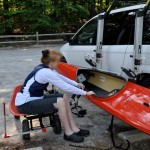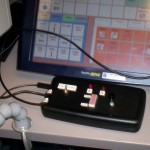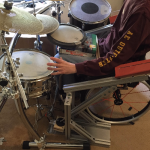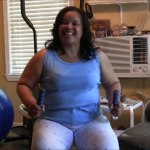A device for drum player who has a spinal cord injury, enabling him to play the bass drum with his arms.
Rehabilitation Engineering Design Projects
as part of senior design at UNC
Horseplay Signaling System

A wireless navigation system for individuals with visual impairments who participate in therapeutic horseback riding. It provides information about specific landmarks so that they can navigate around the arena independently.
Don’t Rock the Boat

A device that enables an individual with disabilities to independently transport her kayak. It consists of a modified roof rack that brings her kayak down to a level of 18″ from the ground, and a cart so she can move her kayak from her van to and from the water, and to and from her storage location at home.
Switch Relay

A device that gives clients control over two different switch-activated devices using only one switch
Walker Monitor

Users of rolling walkers who have Parkinson’s disease sometimes experience “freezing of gait” episodes in which a loss of balance causes serious injury when operating a walker. This device alerts the user at the onset of an episode, helping them to “break the freeze” and maintain their balance.
Custom Tricycle Braking System

A custom braking system that allows a client with cerebral palsy to activate her tricycle brakes independently. She does this by rotating a braking bar that is attached to her handlebars.



University Operator: (919) 962-2211 | © 2024 The University of North Carolina at Chapel Hill |